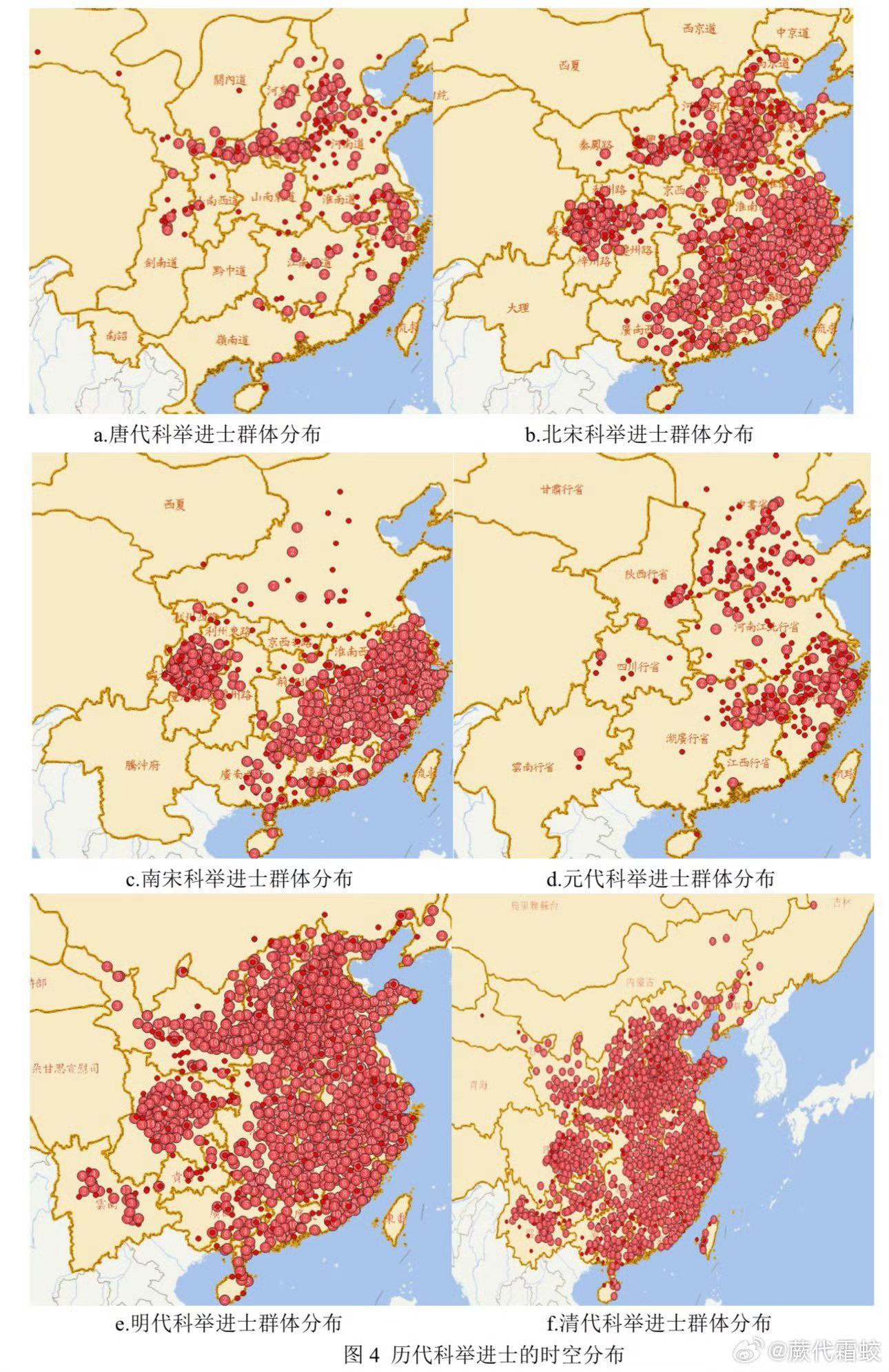Map of No.1 Scholars in Chinese Civil Exams


Alex Cartwright
Senior Cartographer & GIS Specialist
Alex Cartwright is a renowned cartographer and geographic information systems specialist with over 15 years of experience in spatial analysis and data...
Geographic Analysis
What This Map Shows\nThis map visualizes the geographical origins of the top scholars who achieved the highest rank in the government civil examinations of China from the Tang to the Qing dynasty. These examinations, known as the imperial examinations, were a crucial part of the bureaucratic system in ancient China, dictating who could enter public service and thus wield significant influence in governance. The visualization provides a snapshot of the regions that consistently produced these elite scholars, offering insights into the socio-political landscape of historical China.
Deep Dive into Scholar Origins and the Examination System\nThe imperial examinations began during the Sui dynasty but gained prominence during the Tang dynasty (618–907). They were designed to select candidates for the state bureaucracy based on merit rather than aristocratic lineage. This is a fascinating aspect of Chinese history, as it allowed for a certain degree of social mobility, where a talented individual from a humble background could rise to become a high-ranking official.
Interestingly, the examinations evolved over the centuries, becoming more rigorous and extensive, with multiple levels including the local, provincial, and palace examinations. The subjects tested included Confucian classics, law, poetry, and essay writing, which emphasized not just knowledge but also the ability to express oneself eloquently.
Throughout the dynasties, specific regions began to stand out as hubs of scholarly achievement. For example, the Jiangsu province, particularly the city of Nanjing, was a significant center for scholars during the Ming dynasty (1368–1644). Similarly, the province of Henan showed a strong presence, particularly in earlier dynasties. The map highlights these regions, showing a clustering effect where certain provinces produced more top scholars than others, often due to the concentration of educational resources and cultural emphasis on scholarly pursuits.
The dynastic transitions also played a role in shifting these centers of learning. The Song dynasty (960–1279) saw a notable increase in the number of candidates from the south, as the political capital moved southward from the north. This shift was not only geographical but also cultural, as southern China experienced economic growth that allowed for the establishment of academies and schools that nurtured scholarly talent.
Regional Analysis\nExamining the contributions of various regions, we notice distinct patterns. For instance, the coastal regions, such as Zhejiang and Fujian, had a strong showing of scholars during the Ming and Qing dynasties. This can be attributed to their economic prosperity driven by trade, which facilitated educational development.
Conversely, areas like Shanxi and Shaanxi, while historically significant, showed fluctuations in scholar output, often influenced by local governance and access to educational institutions. The historical context of these regions adds layers to understanding why certain provinces produced more scholars. For example, during the Tang dynasty, the capital was in Chang'an (present-day Xi'an), which naturally led to greater scholarly success in that area.
The map also reveals how historical events, such as wars, rebellions, and administrative reforms, impacted the distribution of scholarly success. Regions that faced instability often saw a decline in educational pursuits, while those that thrived economically and politically became hotbeds for aspiring scholars.
Significance and Impact\nThe implications of these geographical patterns are profound. The concentration of scholars in specific regions not only shaped the political landscape of their times but also influenced cultural and intellectual developments throughout Chinese history. For instance, the prominence of scholars from Jiangsu contributed to the region's status as a cultural center, impacting literature, philosophy, and governance.
Today, understanding this historical context provides insights into modern China and its educational landscape. The legacy of the imperial examination system can still be seen in contemporary competitive examinations and the respect afforded to academic success. Furthermore, as China continues to evolve, the historical significance of these regions may inform modern educational policies and regional development strategies.
In conclusion, this map serves as more than just a visual representation of historical data; it encapsulates the rich tapestry of Chinese history, where geography, culture, and education intersected to shape the nation's bureaucratic and intellectual heritage. Have you ever wondered how these historical dynamics continue to influence modern governance in China? The legacy of these scholars is indeed a fascinating topic worth exploring further.
Visualization Details
- Published
- August 14, 2025
- Views
- 108
Comments
Loading comments...